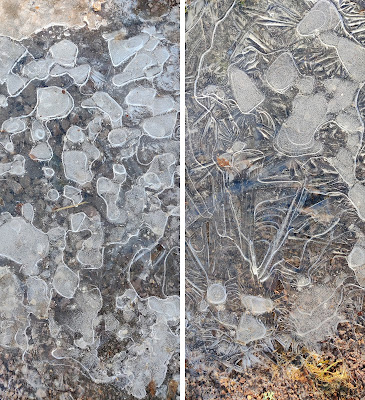Partway through April, my husband and I joined a group from the British lichen society on Arran for a few days of lichen hunting. Although my husband is quite happy for me to go lichen hunting, he spent his time cycling. The weather was rather unpredictable resulting in our ferry from Ardrossan being cancelled with an hour’s notice and deferred for two days to 7 o’clock in the morning. After the initial panic, we managed to drive to Troon and get an alternative ferry, with a sigh of relief. We were very fortunate has the ferry after that was cancelled as well, and some people had to wait until the following day to get over.
As most of you will know, Arran is an island on the West Coast of Scotland. Although small, it has a range of interesting habitats from a mountain, Goat Fell, to plenty of coastline and Glens. Each habitat has a different selection of lichens, and I particularly enjoyed the coastal visit to Kildonan which included dinosaur footprints in the rock.
I am not familiar with
coastal lichens as Newtonmore is a long way from the sea but there was a big
expanse of Dermatocarpon miniatum on the boulders where water ran down. I don't know why it is called miniatum as the lobes weren't mini at all, being over an inch across. There
was another species of Dermatocarpon in my last post which again was in a place where
water ran down the rocks.
Another visit was to an old graveyard. Graveyards are very
popular with lichenologists because the gravestones are made of different rocks
and lichens have their own preferences for the acidity or alkalinity of the
rock they grow on. This means that you get a good range of species in a small
area.
 |
| Noses to the gravestone! |
On returning to Newtonmore, I went for a walk along the Spey to advise on where they might put wildflower information boards. It is bit early for flowers on the Wildcat trail down by the Spey but there were some interesting fungi.
 |
| A morel |
 |
| Moon Poop |
Apologies for the awful picture but there were two large hand size white blobs on an old Alder tree. On touching one, it had a skin but was squishy inside. A bit like custard that had set in the jug. Research revealed that it was not a fungus but a slime mould, Reticularia lycoperdon or False Puffball or even better, Moon Poop! I had plans to go back and take pictures when it had developed more and produced spores but as you will find out in a moment this was not to be.






































